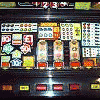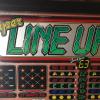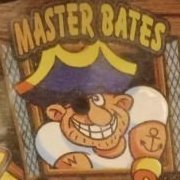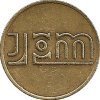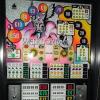Leaderboard
-
[[Template core/front/popular/memberRow is throwing an error. This theme may be out of date. Run the support tool in the AdminCP to restore the default theme.]]
[[Template core/front/popular/memberRow is throwing an error. This theme may be out of date. Run the support tool in the AdminCP to restore the default theme.]]
[[Template core/front/popular/memberRow is throwing an error. This theme may be out of date. Run the support tool in the AdminCP to restore the default theme.]]
[[Template core/front/popular/memberRow is throwing an error. This theme may be out of date. Run the support tool in the AdminCP to restore the default theme.]]
Popular Content
Showing content with the highest reputation on 09/27/21 in all areas
-
You could always use a JY-142 board. You should be able to find one for around 20 odd quid. It basicly counts the pulses from the notey, and converts x amount of pulses to x amount of coins. I built this a few weeks ago. I posted a bit of info on DIF at the time. I also added an arduino Leonardo board to this, so that I can convert notes to keyboard presses in MFME.3 points
-
1 point
-
That tiny battery damage break next to q1 was enough to stop this board. The Leds all looked normal but it screws up the memory. Tapped buttons and the reels just twitched. A tiny bit of green/blue rot any where is enough to stop it1 point
-
It's been a while since I wrote an MPU3 fault up. Just when you think you've seen it all yet another one comes along to bite you in the bum? This one came in as not working/untested and after the usual suspects had been swapped out I noticed that IC23 (74LS08) was burnt! Swapping this out and then powering up on the test rig I was pleased to see the reels moving and the lamps flashing. The triacs were all pulsing correctly too. So moving on to the switch test and ....nothing?? Now IC23 is fed from IC11 (74LS138) and here there were no outputs because there were no inputs! Hmm what's going on here? The inputs to this chip come from 3 of the 6821's IC3,4 & 5 and there was nothing leaving on all three on pin 39. A quick resistance check to ground showed 2.1 Ohms 1k Ohms and open circuit (should be approx 5K) so although all 3 PIO's were working in their other functions all the pin 39's had popped!! What a bummer. IC21 (9602) is also connected to pin 1 of IC11 and this had also popped. With all parts replaced things were back to normal thank goodness.1 point
-
I would like to personally thank frank for sticking with the mecca and sharing his very interesting life with us all.. Looking forward to more stories from the birds beak We are indeed lucky to be able to share franks experience in the industry in such great detail and 1st hand.. Thanks again mr bird1 point
-
Electro mechanical to Electronic machines 1978 ? ish As I recall, the initial ventures into the future with the new electronic JPM machines used the traditional reel unit mechanics. Obviously a much lower current than was traditionally used was sent through the static reels mechanism, after the reels had revolved and stopped, and in the case of a win position through the aligned wipers against the studs and shorting the appropriate contacts. This brought about new issues due to the low power required, variable resistance due to dust, dirt, scratches etc, and other problems due to the sensitivity of the control circuits and the soon to be antiquated mechanical nature of the reel unit. To keep the wipers held firm against the studs meant that the motor needed to be held on while the sensing pulse was sent, but any aberration of the drive shaft meant that the wipers would continue moving slightly and the contact would be less than optimum. If I remember we called it ‘breathing’, the reels would literally move up and down and seem to separate from each other! A few machines were constructed in this way and tested in Arcades in local seaside resorts such as Barry Island and Porthcawl but they proved to be unreliable to say the least and demanded regular call outs and attention and the system was deemed troublesome. One (older) guy working with us, Charles Weekes (who became my mentor and a friend friend) was an old school technician who could regularly be seen scratching his wrinkled forehead with his foul smelling, smoke belching briar pipe. Charles Weekes (RIP) had worked on Juke box’s, old Bally, Jennings and latterly ACE machines, having run his own operating company in Caerphilly. Not only that but he had during his National Service days worked on very large scale flight simulators or more correctly as I recall, bomb and anti aircraft training simulators for Lancaster or Wellington bombers. I know not which aircraft and I suppose it could have been neither of them but that’s not really the point, they were large scale electro mechanical projects which demanded regular calibration.. It was Charles that explained to me that a ‘bug’ in the system, well at least back in the day, was in fact exactly what it was. An earwig, moth or similar insect, which had crawled into an open relay or a rotary timer had either shorted out two points or stopped a current or signal from being transmitted from one point to another so you had to find the ‘bug’. Charles one day, completely out of the blue, suggested that we should be looking at using stepper motors to send the reels to a random position then recognise that position by reading a code from the edge of the reel, a grey scale or grey code I believe it was called. He also mentioned to me in a conversation over coffee, that this was a proven technology and normal practice on military tank turrets and rotating gun emplacements but I have no way of proving this was the case. By this time I had moved to After Sales Service and was busy in the field and on the phone but as I was a product of the development department I was always welcomed in to help and give field input or just take a coffee and a Marlboro. He also mentioned to me over coffee and a game of Backgammon, he always won, that this was a proven technology and was normal practice on military tank turrets and rotating gun emplacements but I have no way of proving this. Of course the big problem was the gigantic leap to reverse typical current thought processes. Consider the following.. Randomness in an electro mechanical gaming machine had hitherto always been brought about by the various lengths of time that the reels span and then stopped. This in turn was governed by the control motor run time, but this was also interrupted by a, at least on JPM machines, a ‘random’ timer thus allowing the reels to spin for a random period each game That tried and tested method was about to be turned on its head by sending a reel to a position ‘that was already determined’ by the on board computer. Although the grey scale method was tried and proved to be effective it became obvious that the drive system itself was proving to be pretty reliable. Indeed the precise fixing of the grey scale could prove itself to be problematic given production conditions and personnel, so it never got past the initial prototype and research stages but it was exercised as an idea. Reality was that the drive was so effective, the software only had to check the reels once in a revolution to confirm that it was where it should have been to be reassured that all was ok, or stop and alarm if it was not! Despite all this the first actual ‘game’ implementation proved to be problematic, but I’ll come to that later A great deal of thought and effort went into the process and all the while the realisation that JPM would have to gain the Gaming Board of Great Britain’s approval for such a system. And so the Project began it’s long and tortuous journey. The initial conversations were conducted and the agreement was to go ahead in principal and develop a prototype to conduct a presentation. In reality JPM had already begun scratching the surface of the design and development and had enlisted the help of Texas Instruments. Charles and the dev team had put together the prototype and enlisted the help of a company called Starpoint to build the plastic assembly that would hold the stepper reel in place and allow the free movement of the reel. Starpoint were already in the Industry and had supplied various high quality, precision made plastic parts so they were a natural choice and apart from that, the Directors knew each other and already played golf. Although initially it was a single stand alone unit fixed to a base, it was soon developed as a modular unit that could be clipped together in banks of three or four. In order to prove to the Gaming Board of GB that the system was infallible JPM had to run the system for, as I recall, 250,000 games. As each game ended, and with the use of a super 8 cine camera set on single shot, the result of each single game was recorded. However this would be of no use at all if we did not know what the computer had decided which position the reel ‘should’ have been sent to. So as a confirmation we had a 7 segment LED panel mounted by the side of the reel and this recorded the game number as 12,350 12351 12353 etc which was duly recorded on the single shot. Combined with that a dot matrix printer recorded on fanfold paper, and in a very fine font, the result of the games i.e GAME 12350 Org#1, Lem#3, Bel#1 etc for every one of the 250,000 games. That (#) number against the fruit symbol was as a result of their being more than one of that particular symbol on the reel, and it was necessary to prove that the system had selected the correct one. After being asked to be part of this process, seconded as it were from After Sales, I was asked to check at least 1,000 lines of these results at random from each page of paper. Oh the Joy! This included rolling the cine film to the numbered position to check the result at which point I placed a small tick against the checked result on paper. There were no mistakes. The gaming board were once again invited to the factory where they were asked to look over the result and if they wished they could check for themselves that all was in order. They did actually check the results for themselves and I sat with them for that whole day going over the prints and the video shots and instructing the machine to go to a chosen win line which we did several hundred times. Starpoint did a brilliant design job of the Reel Unit and the product was released with the first machine being the “Each Way Nudge”. Previously, electro mechanical machines had used the principle of Nudge or shifting a reel one position forward. Due to the mechanical complexities it was fraught with problems and proved practically impossible when trying to move a reel backwards. This brought it’s own difficulty with the first game as I mentioned earlier, you see during the ‘dev test’ of the game software, the machine kept getting out of step and we could not figure out why as it had never happened in any of the extensive tests before the ‘game’ software was introduced. It was only when we realised that the break of the optic beam by the registration tab on the reel was made by the tab going forward OR backwards and that the tab was ‘x’mm long, that we understood the problem. As the machine was the Each way nudge, occasionally the tab would break the opto beam as intended, but in the reverse direction. Realisation was that the software had to look for the leading edge of the beam being broken on forward rotation and the trailing edge on reverse, the problem was solved. There were problems introduced when differing suppliers of reel bands supplied alternate thickness of reel bands, adding to the inertia of the reel and overcoming the ramp timing which could cause problems, but tighter specifications overcame that as well. Due to the stepper motor implementation any reel could move in any direction which opened up a whole new world of game possibilities and of course any one of a number of fruit symbols on a reel could be used when the ‘game engine’ decided on a result. Normally there were 20 symbols so if 4 of these were lemons the chance of a lemon coming up for any on reel (given decent randomness) was 4 in 20, (1 in 5) or 20%. Thanks to the design it was irrelevant how many symbols were on the reel as the game was run and the reel was told exactly where to go, or to be more exact, which symbol to go to, so there could now be 20 completely different symbols on the reel as the percentage no longer relied on the actual number of the symbol on the reel. Of course for cosmetic reasons and because of the nudge, there had to be more than 1 of each symbol but the ‘reel’ in the software could be 100 symbols long. This new method became known as the “virtual reel and as it was buried in the software department I know very little more than that. As I still worked enthusiastically and closely with the Dev team, my exposure to and knowledge of the product was growing in contrast to my colleagues in After Sales. This placed me in a good position for the next step up the JPM ladder. As an aside, the ‘nudge’ feature was actually patented by the Dransfield Novelty company, a facility that I visited and was welcomed to quite often. This no doubt provided the company with significant income as every machine with the nudge facility had to pay them. This is quoted from the Dransfield web site… "The nudge feature, which is still an integral part of most modern gaming machines was developed and patented by Dransfields many years ago and demonstrates its long established pedigree within the industry."1 point
-
1 point
-
Haven't posted here for a while although plenty of boards have gone through the workshop, no time as per usual. Anyway one today had me head scratching for a few minutes. The board came in with 'no boot' as the fault which is usually most of the transistors, resistors and track around the battery area. In this case someone had been here before and had done quite a few repairs. On first inspection I noted the volume pot was missing and on boot up there was nothing although the RESET was good and there was activity on the ADDRESS lines. The DATA lines however were very low, under 2v. First suspect was the CPU which was innocent. Fitting the volume control just gave a continuous farting noise? So where does one go from here? The DATA lines go to all the support chips, RAM, CTC and the Synth chip!! A bit of luck intervened here before I started socketing everything. Checking the waveform of what there was on the DATA bus by the SIO chip showed about 2v p to p. Travelling back towards the CPU I noted it got slightly less per each chip ending up at the Synth chip where it was the lowest. Probably only talking about 0.2v per chip but that made it about 1v difference. Now the synth chip looked like it had been removed and replaced but probably not swapped and it hadn't been socketed (grrrr!) Anyway, once removed, socket fitted and replaced it then booted first time and ran as it should. The chip in question is the AY-3-8910 and these are now becoming difficult to source at a reasonable price. prieces on Ebay seem to vary between approx £18-40 which is ridiculous. I don't even look at the Chinese rubbish as the phrases fingers and burnt spring to mind! Even the Yamaha equivalent YM2149 is getting scarce although I have ordered a couple.1 point
-
Try contacting harry levy.personally i wouldnt touch them with a barge pole.they ripped me off big time with mpu for a galaxy 2 pusher.all you can do is look.0 points

